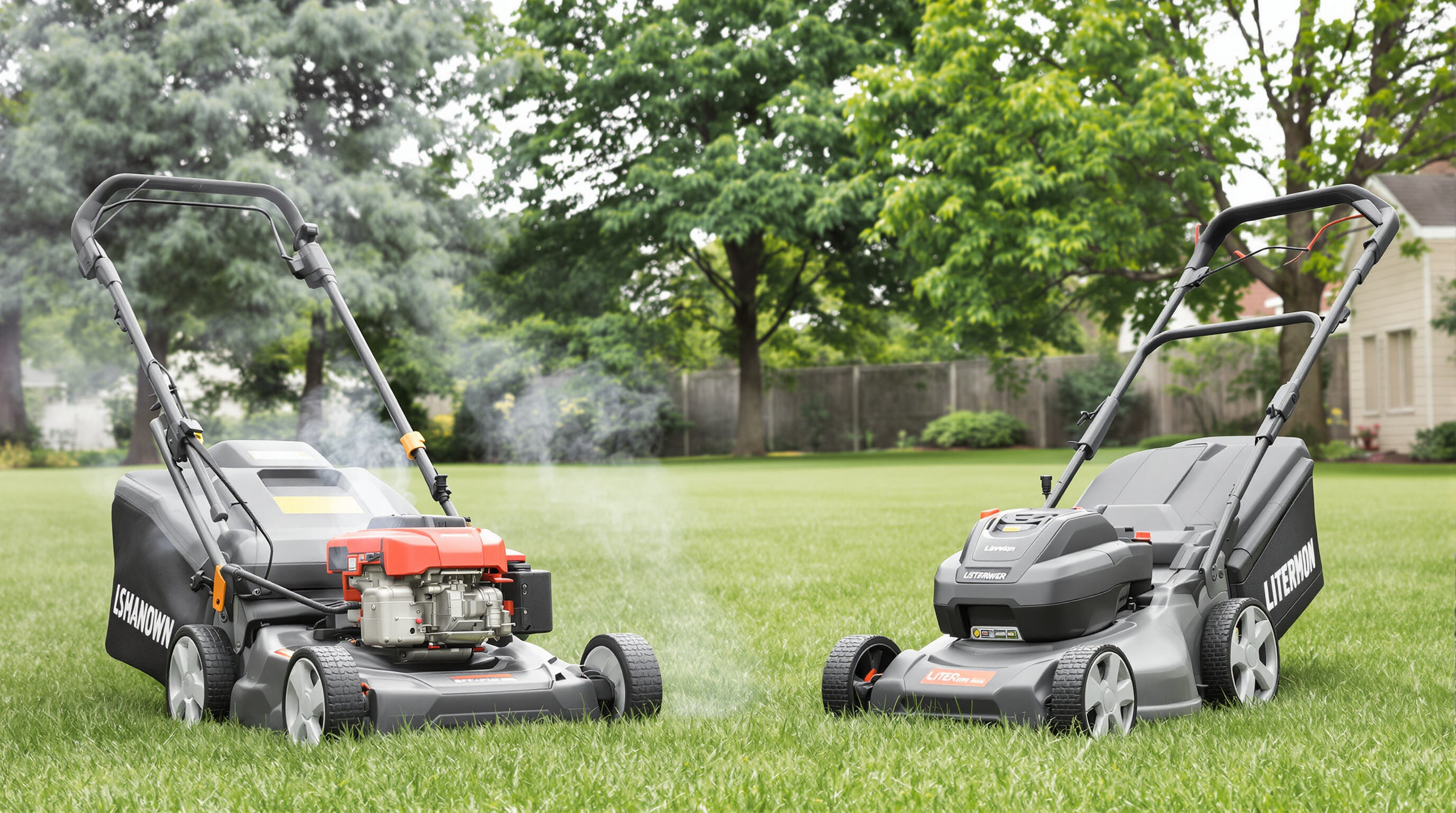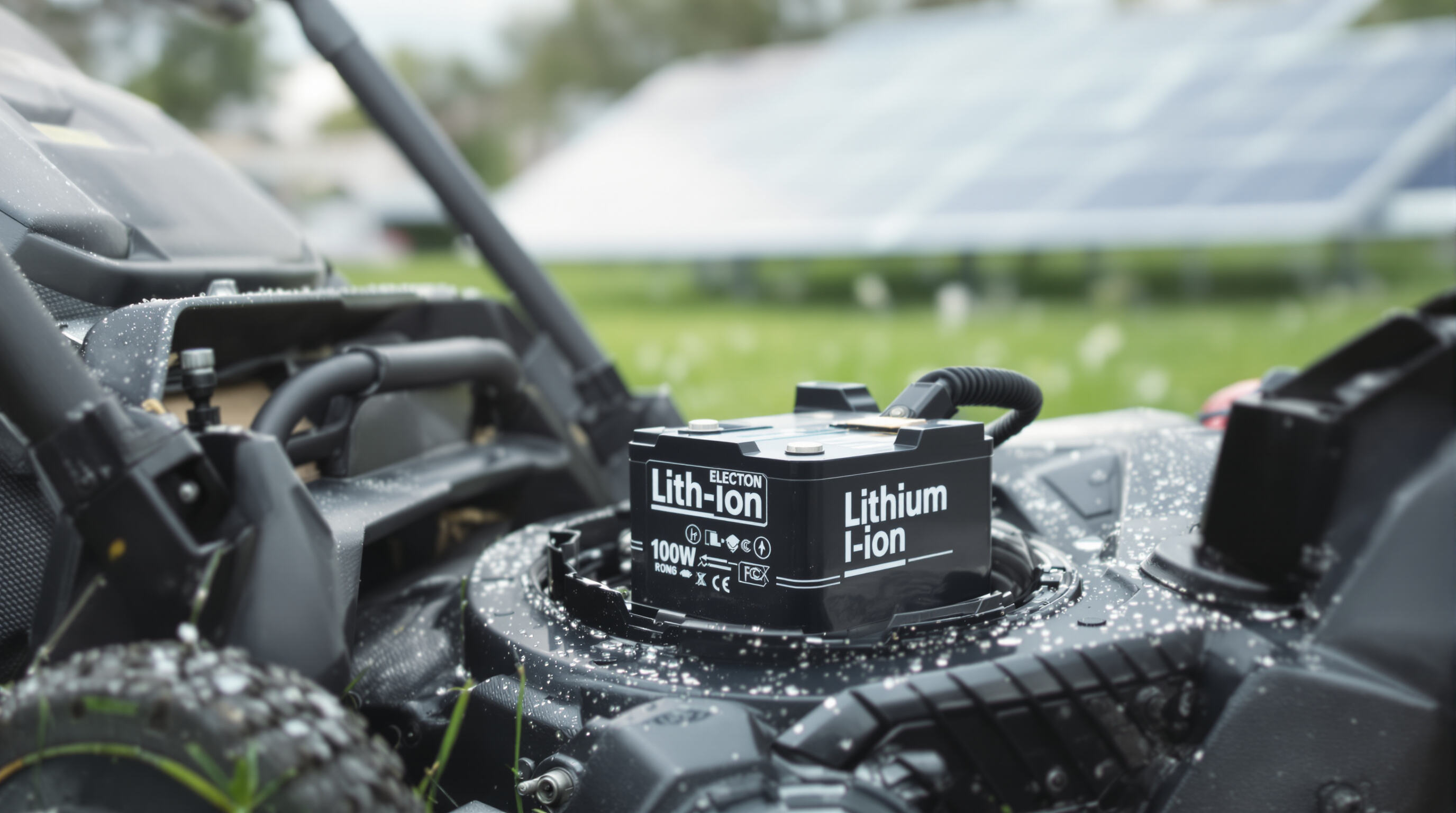How Lithium-Ion Lawn Mowers Cut Carbon Emissions

Clean Operation Enabled by Lithium-Ion Battery Technology
Lithium-ion lawn mowers replace combustion engines with efficient battery systems, eliminating tailpipe emissions. A 2023 analysis of electric vs gas mowers highlights stark environmental differences:
| Metric | Gas Mowers | Lithium-Ion Mowers |
|---|---|---|
| CO2 emissions per acre | 6.2 kg | 0.45 kg |
| Annual operating cost | $350 (fuel/oil) | $24 (electricity) |
This shift prevents 93% of direct emissions compared to gas models while reducing smog-forming pollutants like NOx and PM2.5.
Lifecycle Analysis: Proven Carbon Footprint Reduction with Electric Mowers
Modern lithium-ion batteries offset their manufacturing emissions within 12–18 months of use. Over a 10-year lifespan, electric mowers produce between 474,500 and 693,300 fewer pounds of CO2 equivalents than gas models, even when factoring in battery production and grid-based charging.
Zero-Emission Operation and Its Role in Reducing Air Pollution
By eliminating exhaust at the point of use, lithium-ion mowers prevent 5.8 kg/hour of hazardous emissions typical of gas engines. This improvement directly enhances air quality in neighborhoods, lowering health risks tied to ground-level ozone and fine particulates.
Addressing the Grid Energy Debate: Are Electric Mowers Truly Greener?
Even with 34% of U.S. electricity generated from coal (EIA 2023), lithium-ion mowers charged on the average grid still produce 61% fewer lifecycle emissions than gas counterparts. Their advantage grows dramatically when powered by renewables–one solar-charged mower can avoid 1.2 tons of CO2 annually compared to a gas model.
Sustainable Landscaping with Electric Lawn Care Equipment
Long-Term Environmental Benefits of Switching to Lithium-Ion Lawn Mowers
Lithium ion mowers cut down on carbon emissions by around 87 percent over ten years when compared to their gas counterparts, based on various life cycle analyses. These machines work differently since they don't burn fossil fuels at all, plus many come with batteries that can be swapped out or upgraded. This approach cuts down on problems throughout the whole product lifespan, from regular operation right through to disposal. Some big name companies are already putting recycled stuff into about 40% of their battery parts, which means sustainability isn't just about how people use them anymore. Cities that switched to electric lawn care gear noticed cleaner air too, something that equals taking roughly 135 thousand gasoline cars off the streets every year according to reports from local governments.
Best Practices for Sustainable Lawn Care in Homes and Businesses
To maximize environmental benefits:
- Choose native ground covers that require 60% less mowing than conventional turf
- Pair electric mowers with smart irrigation systems that reduce water use by 35% (EPA WaterSense)
- Launch blade-sharing programs to cut down on duplicate equipment ownership
- Mow during cooler hours to preserve grass health and reduce energy strain
Optimized maintenance extends lithium-ion mower lifespans to 8–12 years, with reconditioning services restoring up to 90% of original battery capacity. Commercial operators report 23% lower annual costs after switching to electric fleets, demonstrating clear ecological and economic advantages.
Battery Life, Charging Efficiency, and Real-World Sustainability

Lithium-Ion Battery Longevity in Field Conditions
Modern lithium-ion batteries retain 80% capacity after 2,500 charge cycles under normal conditions–equivalent to 10–15 years of seasonal use. According to field tests, this durability is supported by key innovations:
- Thermal management systems that prevent degradation in extreme temperatures
- Adaptive charging algorithms that reduce stress on cells
- Rugged cell architecture resistant to vibration and moisture
These advancements ensure long-term performance and reduce replacement frequency, minimizing electronic waste.
Charging Infrastructure and Reduced Dependence on Fossil Fuels
Electric lawn mowers cut out fossil fuels completely during operation. Most modern chargers work at around 90 to 95 percent efficiency these days, and many homeowners who install solar panels find they can run their entire yard maintenance without any carbon emissions at all. According to utility companies, it takes less energy to charge a lithium battery powered mower for just one hour than what goes into processing regular gasoline for the same amount of time spent cutting grass with traditional machines. With more renewable sources coming online across power grids nationwide, we're likely going to see this difference in efficiency keep growing bigger over time as well.
Case Study: Zhejiang Leo Garden Machinery’s Impact on Eco-Friendly Mowing
Innovative Lithium-Ion Mower Designs for Maximum Emission Reduction
Zhejiang Leo Garden Machinery has developed modular lithium-ion battery systems that reduce manufacturing waste by 22% compared to conventional designs (2023 Industry Efficiency Report). Their mowers feature brushless motors and intelligent power management, cutting energy use by up to 35% without sacrificing commercial-grade performance.
Measured Carbon Reductions Achieved by Commercial Users
A 12-month study of landscapers using Zhejiang Leo’s equipment found an 87% reduction in greenhouse gas emissions versus gas-powered models. Municipal users eliminated 740 kg of CO2 per mower annually–equivalent to planting 12 mature trees per machine.
Scaling Sustainable Manufacturing in the Electric Garden Equipment Industry
The company powers 92% of its production facilities with renewable energy and recycles 78% of battery materials through closed-loop systems. This approach avoids 18,000 metric tons of CO2 emissions yearly–equal to taking 3,900 gasoline vehicles off the road–while meeting rising global demand for sustainable landscaping tools.
FAQ
What are the environmental impacts of gas-powered lawn mowers?
Gas-powered lawn mowers significantly contribute to greenhouse gas emissions, releasing pollutants equivalent to a car driving 300 miles in just one hour of operation. They emit harmful substances like carbon monoxide, nitrogen oxides, and volatile organic compounds.
How do electric mowers compare to gas mowers in terms of emissions?
Electric mowers, particularly those using lithium-ion batteries, produce zero direct emissions during operation. Lifecycle studies show they can generate 16 times fewer carbon emissions per acre compared to gas-powered mowers when using the standard U.S. electricity grid.
What health issues are associated with gas mowers?
Gas mowers contribute to urban air pollution, with fine particulate matter (PM2.5) linked to increased asthma hospitalizations and COPD among landscapers. They also lead to substantial annual healthcare costs.
Are electric mowers really greener considering manufacturing and power sourcing?
Yes, electric mowers generally produce significantly fewer emissions over their lifecycle. Their efficiency and environmental benefits increase dramatically when powered by renewable energy sources like solar and wind.

